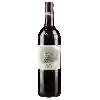
Winery Les BardotsLecefer
In the mouth this red wine is a powerful with a nice balance between acidity and tannins.
This wine generally goes well with poultry, beef or veal.
Taste structure of the Lecefer from the Winery Les Bardots
Light | Bold | |
Smooth | Tannic | |
Dry | Sweet | |
Soft | Acidic |
In the mouth the Lecefer of Winery Les Bardots in the region of Bordeaux is a powerful with a nice balance between acidity and tannins.
Food and wine pairings with Lecefer
Pairings that work perfectly with Lecefer
Original food and wine pairings with Lecefer
The Lecefer of Winery Les Bardots matches generally quite well with dishes of beef, veal or game (deer, venison) such as recipes of spit-turned boar leg (oven) with "automatic watering"., veal with cream and mushrooms or rabbit with green olives.
Details and technical informations about Winery Les Bardots's Lecefer.
Discover the grape variety: Nosiola
This is an ancient indigenous variety that has been cultivated for a long time in the north-east of Italy, particularly in the Trentino-Alto Adige region, although it has been somewhat neglected. It is related to rèze and groppello bianco, but should not be confused with veneto durella. The Nosiola can be found in Spain, Australia, ... in France it is almost unknown.
Informations about the Winery Les Bardots
The Winery Les Bardots is one of of the world's greatest estates. It offers 6 wines for sale in the of Bordeaux to come and discover on site or to buy online.
The wine region of Bordeaux
Bordeaux, in southwestern France, is one of the most famous, prestigious and prolific wine regions in the world. The majority of Bordeaux wines (nearly 90% of the production Volume) are the Dry, medium and Full-bodied red Bordeaux blends for which it is famous. The finest (and most expensive) are the wines of the great châteaux of Haut-Médoc and the right bank appellations of Saint-Émilion and Pomerol. The former focuses (at the highest level) on Cabernet Sauvignon, the latter on Merlot.
The word of the wine: Sorting
Action which consists in removing the bad grains, not ripe or affected by the rot. We often use vibrating sorting tables which, by shaking, make the impurities fall to the ground. In the case of sweet wines, we speak of harvesting by successive selections, in several passages, to select the very ripe grapes each time.














